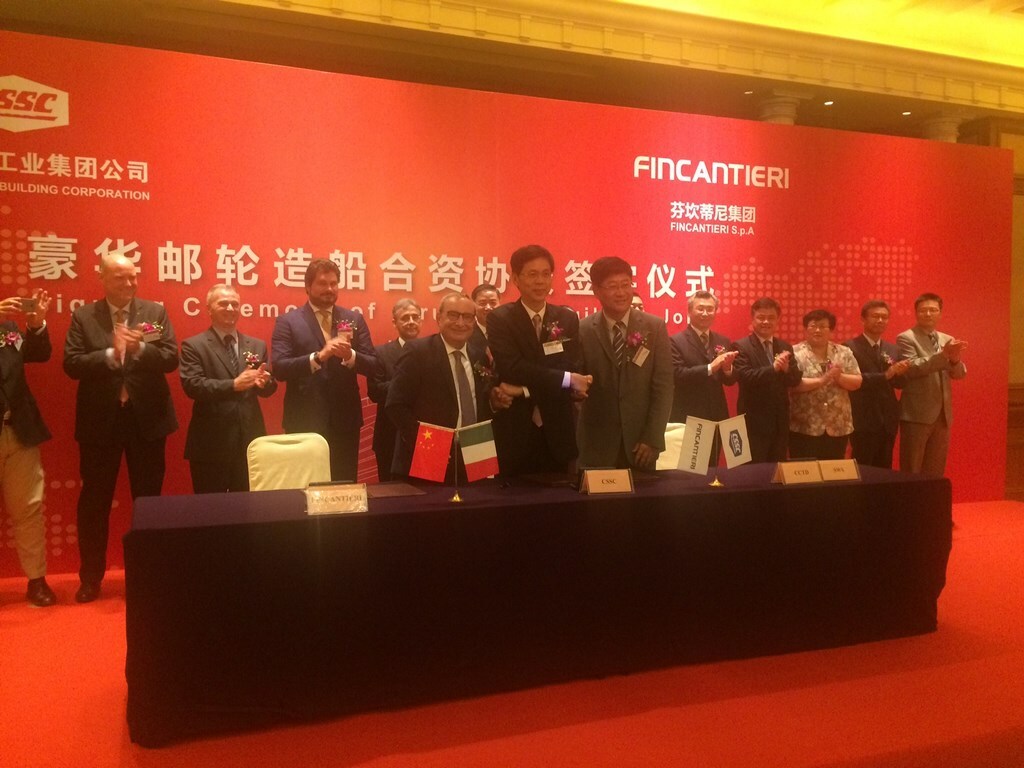 Fincantieri is building more cruise ships and a broader range of ships than any other shipbuilder. “We are building small, intermediate and large ships,” said Loris Di Giorgio, head of cruise ship marketing and sales, in an exclusive interview with Cruise Industry News.
Fincantieri is building more cruise ships and a broader range of ships than any other shipbuilder. “We are building small, intermediate and large ships,” said Loris Di Giorgio, head of cruise ship marketing and sales, in an exclusive interview with Cruise Industry News.
Added Monica Polidori, in charge of strategic market analysis: “Our model is very flexible because our production network is made up of shipyards of different sizes. In addition, we are now working with Vard, with yards in Norway and Romania, which gives us even more flexibility.”
In fact, Di Giorgio underlined the company’s diversification in cruise ship building, naval vessels and offshore. “We are different than many of our competitors and less prone to suffer from economic cycles,” he said. “Furthermore, cruise ships are also benefitting from the expertise and knowledge developed in the other sectors.”
Today, Fincantieri builds the largest vessels at its Monfalcone facility, while the Marghera yard builds ships from 100,000 to 140,000 tons, Sestri, from 55,000 to 100,000 tons and Ancona from very small luxury and expedition ships up to 50,000 tons.
Sections can be built at its Palermo and Castellamare yards and towed to one of the other yards for completion.
Vard has been focused on the offshore industry. But to compensate for the downturn in oil and gas, Fincantieri is working closely with its subsidiary to build expedition ships. The hulls will be built in Romania and towed to Norway for outfitting and completion.
Also, this summer Fincantieri signed an agreement with the China State Shipbuilding Corporation (CSSC) for a joint venture to eventually build cruise ships in China for the Chinese and Asian markets.
These vessels will be built at CSSC’s Shanghai Waigaoqiao Shipbuilding facility (SWS) on the basis of a technological platform licensed to the joint venture and to the SWS shipyard by Fincantieri, which will perform the activities within its competence through the joint venture.
Earlier this year, Fincantieri signed what it called an exclusive cooperation agreement with Huarun Dadong Dockyard for ship repair and conversion aimed at serving the cruise ships based in China.
“Our agreement is for ships that are deployed and sailing from China and in this part of Asia,” said Polidori. “Previously, these ships had to go to Singapore for drydocking and that is quite a distance. Now, all the work can be done in Shanghai. We saw this as a business opportunity.”
“Monica (Polidori) and myself joined the company 30 years,” ago DiGiorgio said. “Since then we have seen Fincantieri grow from a local company to an international, diversified corporation. Going from local to global and more diversified has intrinsically made us more solid.”
Di Giorgio and Polidori are confident that they will continue to see strong demand for cruise ships, because of the low penetration of western market and the growth of new markets, like China.
Plus, there will be demand generated from the replacement of vessels reaching their 30-year service life.
“The cruise market will continue to demand more ships, different ships and new technologies,” Di Giorgio added.
Excerpt from Cruise Industry News Quarterly Magazine: Fall 2016




